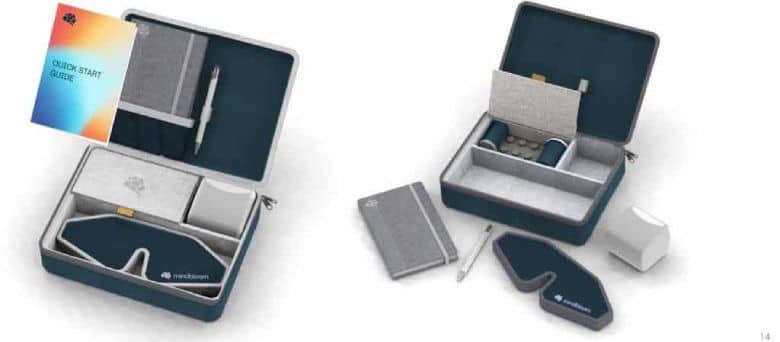In October 2020, Third Wave announced its official partnership with Mindbloom, a consumer health platform pioneering telemedicine psychedelic treatment. Since then, hundreds of people in our community have turned to Mindbloom to relieve anxiety, heal depression, and generally bring back the spark of the mystery into everyday life.
I am one of those hundreds, and in this short two-part series, I will walk you through my experience with Mindbloom and let you know how it stacks up to the myriad other psychedelic experiences I’ve had in the past ten years.
The first part of this series focuses on Mindbloom as a platform and why I chose to go through the treatment. The second part will walk you through the experience itself and what outcomes I experienced as a result.
Part 1: Why Mindbloom?
Although psychedelics have undergone a revival in the past several years, all of the classic psychedelics remain illegal. Because of this, it is basically impossible to receive affordable and accessible psychedelic treatment. The vast majority of folks who use psychedelic substances do so in underground situations.
Enter ketamine.
Because of its widespread use as an anaesthetic since the 1960s, ketamine is widely accepted by the medical community as safe and valuable. After noting its ego-dissolving effects, doctors began using it for mental health purposes, particularly suicidal ideation and treatment-resistant depression.
Ketamine treatment comes in many different forms: nasal sprays, IVs, intramuscular injections, lozenges, and even sticky goo that you can apply rectally. In the context of mental health, there are two core treatment modalities: ketamine infusions that come with very little prep and integration, and ketamine-assisted psychotherapy (KAP), which uses ketamine as a psychedelic-like catalyst, paired with preparation and integration support.
Considering our focus on long-term psychedelic healing at Third Wave, we have chosen to exclusively support providers who work with ketamine in a psychedelic-assisted manner. During the recent COVID-19 lockdowns, telemedicine ketamine with lozenges emerged as a practical and productive model for the thousands of people in our community who wanted access to legal psychedelic therapy.
As an emergent leader in this space, Mindbloom is building out an excellent product, team, and care model to help participants who choose telemedicine ketamine therapy feel held and supported. Mindbloom strikes the perfect balance between accessibility, efficacy, and a scalable business model. While many companies in this space are simply focused on drug development and clinical trials, Mindbloom has—intelligently—chosen to focus on a care model that provides immediate relief without breaking any laws. And their programs are financially accessible, at $89/week for three months.

Why did I choose Mindbloom’s treatment model?
In the spirit of full transparency, I love to guinea pig cutting-edge approaches to psychedelic medicine. To be able to work with ketamine legally through at-home model felt like too good of an opportunity to pass up.
But, as all humans do from time to time, I also struggle with low-level anxiety, which I usually cover up with consistent cannabis use. My intention for Mindbloom was to dive a little deeper into the root of this pervasive anxiety and minimize the frequency with which I used cannabis.
Mindbloom requires a Peer-Treatment Monitor, which is a medical phrase for the classic “trip-sitter” or psychedelic guide. After you go through the initial screening with a clinical nurse practitioner, Mindbloom sends the “Bloombox” to your home, including the ketamine lozenges, eye-mask, journal, pen, and blood pressure monitor. Depending on your particular prescription, you receive anywhere from four to ten lozenges of 200 or 300 mg each.

Although the Bloombox includes necessities for a safe first-time psychedelic experience, I prefer to spice things up. For my first Mindbloom experience, I used the basic framework provided, including an eye-mask, the ketamine lozenge, and an excellent playlist hosted on Soundcloud. But I also added a few enhancements, namely wearing the Apollo Neuro on ‘Mindfulness Meditation’ mode and laying down on the Shakti mat for the entirety of the experience.
In total, that first experience lasted about 90 minutes. When I came out of it, the first phrase that popped to mind was “The Pocket of God.”
About the Mindbloom Experience
In consuming about 400 mg of ketamine lozenge, I sent myself into an almost fully dissociated state, balancing between the brink of mystical connection and blackout. It felt like the perfect amount. Enough to blast me into outer space, to become one with the cosmos, to feel the absurdity of the entire universe in the boxy comfort of my studio apartment in Miami.
With my first experience complete, I checked back in with my Mindbloom guide the following day for an integration call. We spoke about what arose during the experience and the specific changes I wanted to make in the next couple of weeks with the enhanced neuroplasticity that ketamine facilitates. We also chose the next ketamine treatment date, which happens about ten days after the first experience. In total, the initial Mindbloom treatment consists of four ketamine lozenge experiences, spread over a minimum of one month.
Why did they choose this frequency?
Mindbloom’s Treatment Protocol
Mindbloom’s treatment protocol is based on established best practices for client outcomes. They ask clients to complete four treatments within the space of a month for ideal treatment outcomes. At the end of that one month, clients report significantly improved outcomes across the board. Explore the type of results people often experience with ketamine treatment.
After your first ketamine experience, Mindbloom also has you check in with your clinical nurse practitioner for a follow-up meeting. They do a check-in to ensure you took the appropriate amount of medicine in your first experience and then determine how much ketamine will be sent to your home for the second, third, and fourth experiences.
In the second part to this two-part series, I will dive deeper into my last three Mindbloom experiences, and discuss the general benefits and outcomes I realized through this treatment.








Looking forward to learning more about this theraputic practice.
i am on a fixed income is there a way i can make payments